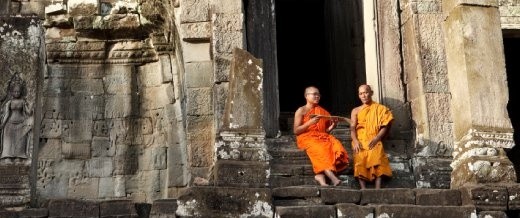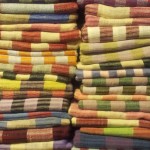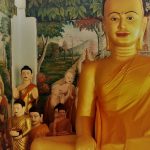
Over the last decade Cambodia has seen a rapid and steady rise in tourism which by many Cambodians is viewed as the golden ticket to improve life chances and, thus, flock to tourism hubs leaving their work on farms and large families behind. The country still remains one of the lesser developed countries in the world in terms of economy, access to food, education, health and medical services. Stark poverty is evident throughout the country and the gateway to the temples and main tourist hub of Siem Reap is no exception.
Tourism can trigger many positive contributions to the local economy and communities, but sadly many negative impacts too. Not only negative impacts on the environment, but on society. Recently, Cambodia was flagged on BBC World News as one of two countries highlighted for attracting the wrong type of tourists. Those tourists that come specifically to exploit the young and vulnerable and purposely those working in the sex trade.
So, how can tourists minimise negative impacts and, at the same time, generate positive economic benefits for local people and ultimately create better places for people to live in and for people to visit? Simply by staying and eating at locally owned and socially aware establishments, your money stays within and supports the local economy, as does buying from local markets and roadside vendors.
The International Center for Responsible Tourism (ICRT) maintain that these simple acts can generate greater economic benefits for local people and enhances the well- being of host communities and improve working conditions. In addition, it is encouraged to stay in establishments that consider the community and support local organisations committed to helping the underprivileged and places that promote the safety of children. Look out for hotels that support the ‘Child Safe’ network* who have specifically trained hotel staff to work within and respect childsafe guidelines.
Being responsible also encourages positive contributions to the conservation of natural and cultural heritage and minimise negative environmental impacts. Whilst out and about the Angkor temples try to avoid the crowds, but follow restrictions. You will see well trodden paths which have been sectioned off to allow the re- growth of grass in places. Time has been taken to start protecting the monuments hence the no entry signs, these were put there to protect the temples and not to aggravate over enthusiastic tourists.
Avoid touching and clambering, or brushing your backpacks against the ancient sand stone carvings and bas reliefs – they have been there for thousands of years and hopefully they can continue to remain. Think about going further afield and visiting lesser seen temples – Koh Ker, Beng Melela and Bantay Chamar.
Consider too when leaving guest rooms to turn off lights and air-conditioning units, minimise the use of water and follow the hotels’ green policies. Rumours abound heighten the concern that the subsequent high water usage in town threaten the very existence of the temples. As the water table beneath disappears so may the temples above?
Unique experiences can be made through meaningful connections with local people, and through a greater understanding of local cultural, social and environmental issues. Be considerate and respectful of Cambodian ways and be culturally sensitive to them. Chatting with locals and getting off the beaten track is an alternative experience to find the real Cambodia, but remember, as in the temples, cover up. Cambodians aren’t used to exposed shoulders and knees or public displays of affection.
An active display of social customs is much appreciated and will often be welcomed with a big welcoming Cambodian smile. When meeting a monk or someone older than you, your host or someone important place your hands in prayer position at face level to show your respect.
The feet are seen as the lowliest part of one’s body and, the head the most important. Therefore, do not touch heads or point feet – especially not towards monks or Buddha images the higher the body part, the higher the respect. When visiting somebody’s home, it’s always polite to take off one’s shoes. Many restaurants, bars and shops also adopt this habit so you will find an array of shoes outside – just remember to take the right ones, after.
It’s often difficult to actually know what do to when approached by beggars or street children. A couple of dollars to make oneself feel good or an awkward shake of the head followed by an afternoon of guilt could be two options. It is, however, worthwhile to remember that many people struggle to earn a dollar per day and, thus, will make more by taking their children out of school and sending them off to the streets to beg from tourists. By not giving, it hopefully discourages them from staying on the street and motivates them to continue their education and find alternative employment.
For more information on Responsible Tourism guidelines as outlined in the Cape Town declaration, please visit ICR Tourism.
*A list of those hotels specific to Siem Reap can be found here.
An earlier version of this article was originally published on WorldNomads.com Safety Hub
>> Read article
- Where are all the bicycles? - 19 April 2017
- On the road again - 18 March 2014
- A personal take on Cambodian cooking - 14 March 2014
You might also like these articles
FEB
2011



